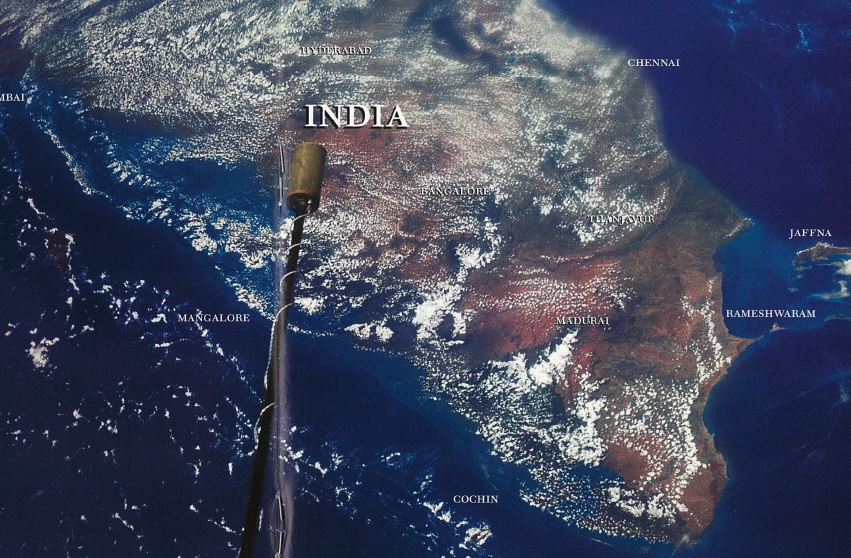By The Associated Press
Drilling machines roar as water gushes through thick pipelines laid where rice once grew. These days, farmers along India’s southern coast are earning more from selling water than raising crops. Although surrounded by water, the area has little of its own for drinking or farming. Yet, because Kanyakumari is one of India’s most popular tourist destinations, there is a great demand for water. Environmental experts say the coastline’s massive thirst is driving down the water table, and farmers are speeding the depletion by tapping their own underground reservoirs for water to sell to the city. The rest of the country, where many places are dry for nine months of the year and flooded by the three-month annual monsoons, could one day face the problem of Kanyakumari. Solutions, the experts say, include improved conservation and desalination plants to make seawater fit for consumption.
The region in Tamil Nadu state, at the confluence of the Indian Ocean, the Arabian Sea and the Bay of Bengal, has no mountains to harvest rain from clouds. In many areas, brackish seawater seeps into what were originally freshwater aquifers. G. Vasudev, a water conservation expert at Kanyakumari’s Vivekananda Center, said, “We have to virtually pray to the rain Gods.” Vasudev’s center has launched a federally funded
program to clean up existing water sources, install filtration
devices and build new reservoirs to tap rainwater.
The water management experiments are being closely watched elsewhere. In areas like Saurashtra in western India, experts say the water table is going down by a yard every year. Tamil Nadu gets 38 inches of rainfall annually, more than the national annual average of 35.2 inches. But nearly 80 percent of the rain washes out to sea. “There is no attempt to tap it,” said P.R.J. Pradeep, a researcher for the Vivekananda Center’s
National Resource Development Project. Tamil Nadu and many other parts of southern India are dotted with catchment tanks and reservoirs that Indian rulers built in the 7th and 8th centuries. These, experts say, could be sources of water today, but they are poorly maintained, often not cleaned for years. According to the independent, New Delhi-based Center for Science and Environment, if rainwater and the runoff could be captured on as little as 2 percent of India’s land area daily, that would provide 26 gallons of water per person.
By The Associated Press
